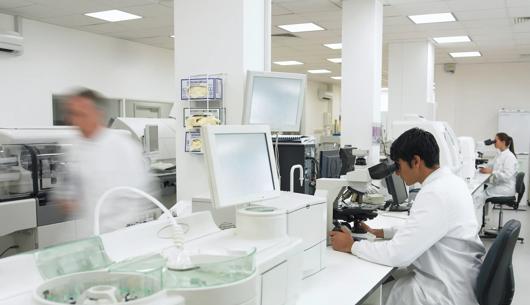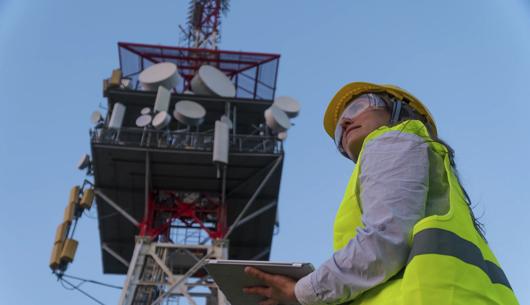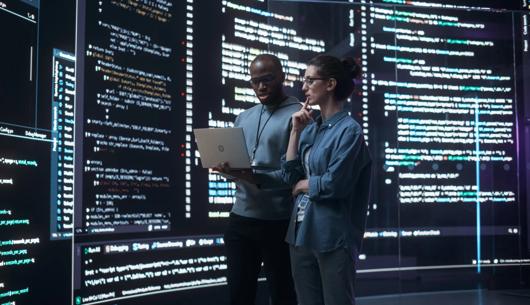This article was first published by Healthcare Digital Magazine, 10 February 2023.
As we continue into 2023 with economic uncertainty, utilising lessons learned from the Covid pandemic and the ongoing ramifications of the local and global measures put in place to manage the spread of that virus, organisations continue to seek efficiencies, retain or obtain a competitive edge and measures to improve productivity.
One of Gartner’s tech trend predictions for 2023 is ‘Industry Cloud Platforms’.
Gartner has predicted that “by 2027, more than 50% of enterprises will use industry cloud platforms to accelerate their business initiatives.
Industry clouds create value for organizations by incorporating cloud services traditionally purchased separately into preintegrated but customizable (composable) industry relevant solutions.
As such, they can increase organizational agility, speed innovation and accelerate time to value.” Linked with this Forbes has predicted a bridging of the digital and physical world via two components: Digital Twin Technology and 3D printing.
So what is Digital Twin Technology?
According to Forbes, Digital Twin Technology is “virtual simulations of real world processes, operations or products that can be used to test new ideas in a safe digital environment. Designers and engineers are using digital twins to recreate physical objects inside virtual worlds, so they can test under every conceivable condition without the high cost of real life experiments. In 2023 we’ll see even more digital twins, from factories to machinery to cars to precision healthcare.”
By way of example, “Formula 1 teams currently collect data transmitted from sensors during races, as well as race track temperatures and weather conditions, to see how cars change during races. Then they stream the data from the sensors to digital twins of the engines and car components and run scenarios to make design changes on the fly.”
Digital Twin Technology has the potential for ubiquitous application from those predicted above by Forbes and beyond including in buildings, construction, farms, energy networks, railways, stadiums and “smart” cities.
Key legal considerations in procuring Digital Twin Technology solutions
The key legal considerations in procuring Digital Twin Technology solutions will not be vastly dissimilar from those applicable to the procurement of other digital technology solutions (including as regards to pre-contract considerations). However, particular attention should be given to data, security, confidentiality and intellectual property rights.
Sarah Hayes, CreDO (Climate Resilience Demonstrator) Project Lead at CDBB (the Centre for Digital Built Britain) said in respect of [data], security and confidentiality that this should be baked down into contracts.
Data used in Digital Twin Technology is typically vast, may be sensitive and may also include personal data. Any personal data should only be processed in accordance with the applicable privacy laws, detailed consideration of which is beyond the scope of this article.
Even if data does not include personal data, it may still be confidential, sensitive or valuable.
From a legal perspective, it may be helpful to consider the data as a) the input data (being the source data that is inputted into the Digital Twin Technology and b) the output data (being the results of the source data that has been manipulated and tested and which are capable of review and analysis by the user).
Typically the procuring entity will want to ensure it retains control and (where applicable) ownership of the input data. This should be reflected in the contract.
The parties may need to discuss and agree which entity will own the intellectual property rights in the output data. One school of thought is that intellectual property should be owned by the party best able to exploit it. That is usually the supplier entity but each case should be considered on its merits. If it is agreed that the supplier entity is to own the intellectual property rights in the output data, the procuring entity may also wish to consider the requirements and feasibility for, and feasibility of entering into a gain share mechanism.
The parties will also need to ensure that the contract sets out how data will be transferred to the owner or controller upon termination or expiry of the contract and whether there are any additional charges to be levied by the supplier entity for carrying out such transfer activities.
Due to the confidential, sensitive or valuable nature of the data being processed, the procuring entity should ensure that the contract contains appropriate contractual obligations on the supplier entity to ensure that appropriate cyber security measures are put in place in respect of the Digital Twin Technology including adequate security incident response and handling processes and procedures. If the Digital Twin Technology is to connect to any of the procuring entity’s licensed or proprietary systems, then provisions should be included in the contract to ensure that this is done in a controlled, secure and restricted manner. The responsibility for and extent of liability for loss or corruption of any data or adverse impact on any of the procuring entity’s connected systems should also be clearly articulated in the contract avoiding any ambiguity or uncertainty as to the position agreed between the parties.
As the data being processed is likely to be confidential or sensitive, the use case for the procurement of the Digital Twin Technology may also be confidential or sensitive. The procuring entity should therefore ensure that the data and all information exchanged in respect of the use case remains confidential. Accordingly, appropriate confidentiality provisions should be included in the contract.
Finally, as with the procurement of any goods and services, the charging model will need to be agreed and clearly expressed in the contract. This may be a SaaS charging model or other fixed price or time and materials model, or perhaps a hybrid. Typically the charges will include licence fees and consultancy fees and perhaps some initial set up fees.
Our advice
Digital Twin Technology has the potential for application in many scenarios but its limitations in respect of large public sector projects should be understood as many of these projects are complex. For the right project, Digital Twin Technology could be an innovative and efficient alternative for understanding how and where to make efficiencies, drive improvements and prepare for future demands and stresses. However, no procurement is without risk. Therefore having in place a contract which accurately reflects the parties’ intentions and mitigates risk exposure should always be a consideration as part of the project as a whole, from the earliest opportunity. The contract is an integral part of the procurement journey and the negotiation process may help to identify legal, technical, financial or operational risk exposure.









































